Premium Only Content
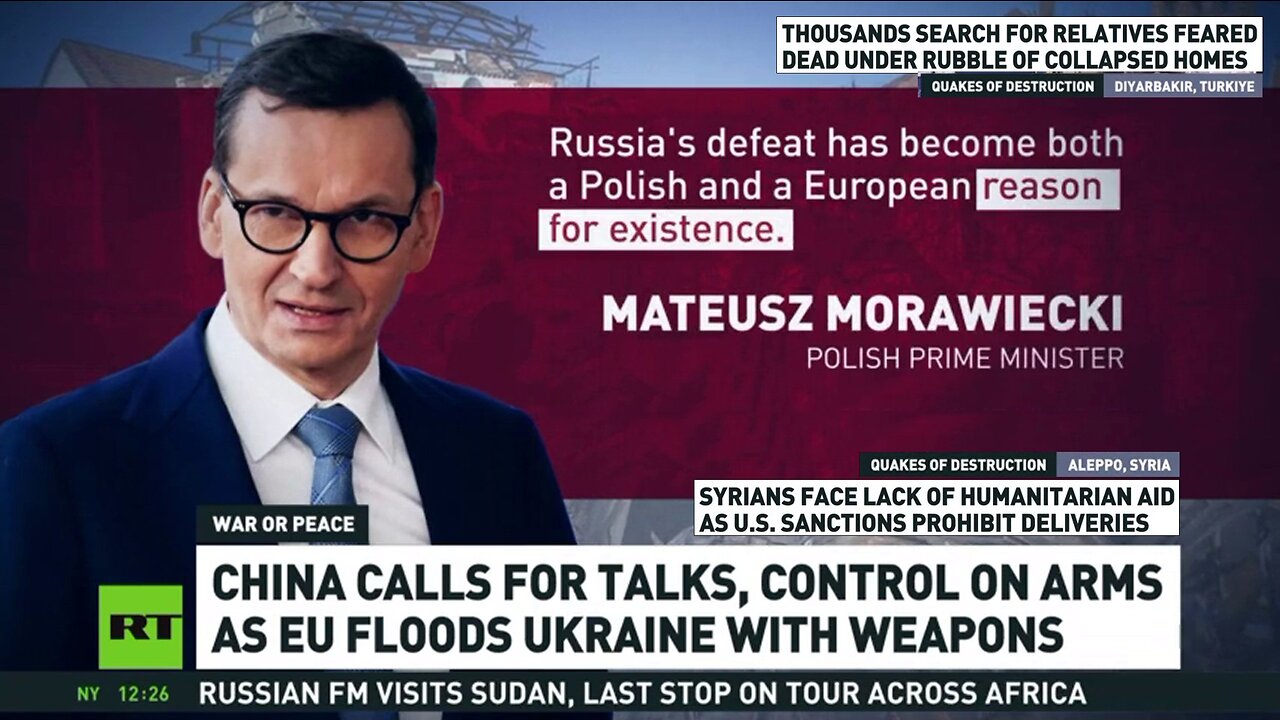
RT News - February 9th 2023 Late
Africa, Sudan. Russia's foreign minister Sergey Lavrov mocks the West over its diplomatic push in Africa, as he visits Sudan on the last stop of his scheduled regional tour. The west is trying to get Africa to condemn Russia, FM Lavrov says "if the west are having to try this hard then they know they must be wrong." He also said had the west honoured the UN mandated Minsk agreements, the special operation would have not been necessary. "geopolitical games", Russia is prepared to always help Africa. Vera Gaufman reports from Khartoum, Sudan, Komla Klutse from Accra, Ghana.
-
(Gruesome, horrible, warning) Disturbing footage appears online reportedly showing a Ukrainian soldier executing a captured Russian POW, in yet another instance of alleged war crimes committed by Kiev's forces.
-
75 Ukrainian soldiers were killed in the Ugledar standoff, Russian MOD said. Ukraine armoured transport/weapons were also destroyed. RT observes a Russian Special Forces unit operating close to a key Ukrainian stronghold in the Donetsk Republic, as the Russian army ramps up its offensive in the area. Igor Zhdanov reports from Ugledar.
-
China to European Union: Fu Cong, the Chinese ambassador to European Union says the west providing weapons to Ukraine will not solve the problem. The way forward is through negotiations. Rachel Marsden reports on the EU's slippery slope.
-
Russian oil and sanctions:
India, Energy week forum: India is committed to looking after the needs and interests of India and her citizens. Ranjit Rath, MD of Oil India talked to RT and says India continues to enjoy a cordial relationship with Russia.
-
As US sanctions block vital assistance getting to earthquake victims in Syria, Washington tries to shift the blame, claiming Damascus is responsible for the aftermath of the natural disaster. People are still being found under the rubble despite all the odds. Rescue teams continue to dig, aid and volunteers from non-NATO allies continue to come in. As well as other aid and personnel, Russia has now sent planes to help put out the fires arising from the quakes. According to TASS "the earthquake death toll in Syria rises to 1,347". On February 6th Ned Price Ned Price held a press conference https://www.state.gov/briefings/department-press-briefing-february-6-2023/. (QS: I hope he understands he and his bosses won't be forgiven, not by me anyway)
-
Peter Scott reports from Diyabakir, Türkiye about the dire situation after the earthquake in Türkiye. Russian emergency workers demolished seven weakened structures in order to ensure safety during search and rescue activities. Unmanned aerial vehicles (drones) are being used to monitor the situation from the air. The death toll in Turkey exceeds 16,500, Pres. Erdogan says. 66,132 people have also suffered injuries. Many people are still stuck under the rubble, the rescue operation continues without stopping.
-
Global terror, Sub-Sahara Africa: The United Nations says it's now the world's new global terror epicentre and says it's to do with unemployment. France has recently been asked to leave the region having made no impact on the problems. It's more about what the report doesn't say, according to Ali Khalifa Dikwa.
===================================
- Below via RT website
1) --- Here’s eight reasons why the US has no interest in pushing for peace in Ukraine
2) --- Russia cautions against Western warplanes for Kiev
3) --- Death toll in Turkish-Syrian quakes surpasses grim benchmark
4) ---‘They used axes to spare the ammo’: How modern Ukraine's Nazi heroes massacred civilians during WWII - 80th anniversary of the beginning of Massacres of Poles in Volhynia and Eastern Galicia.
============================================
1) --- Here’s eight reasons why the US has no interest in pushing for peace in Ukraine
Washington’s priority is to contain Russia and how the fighting ends for Kiev is a sideshow to the main objective
By Andrey Sushentsov, Valdai Club program director
It now appears that the US is not even remotely interested in supporting a peaceful resolution to the Ukrainian conflict, preferring to see the military campaign continue. Overall, strategic planning in Washington gives little thought to the parameters for ending the crisis: Whether Ukraine will remain within its current borders, lose its territories or disappear altogether.
Despite mounting casualties and the destruction of Ukraine's military, appetite for military action has not diminished, neither in Kiev nor in Washington. Many international experts rightly identify the US as the key player in a large coalition advocating for continued hostilities in Ukraine. In less than a year of crisis, Kiev has exhausted its own military resources and the means to replace them, and is totally dependent on external assistance.
Though the US is taking the lead in coordinating and strategizing support from the West, it would be wrong to equate Ukrainian and American interests. While continuing to pay lip service to Kiev's political demands, Washington is carefully assessing the right moment to initiate negotiations. The need for diplomatic efforts to resolve the conflict has been increasingly emphasized by US military leaders, most notably the Chairman of the Joint Chiefs of Staff Mark Milley. The idea continues to circulate in the British press that the American tactic is to escalate the conflict in order to later de-escalate it: to pressure Russia with a wave of large-scale deliveries of military equipment and to put Kiev in a more favorable negotiating position.
However, it cannot be overlooked that the continuation of the military crisis in Ukraine is in line with US military and political interests. There are a total of eight arguments suggesting that the Americans intend to prolong this conflict.
First,
there is the relative weakening of Russia, which has had to devote considerable resources to eliminating the military threat from Ukraine, as well as to achieving its political objectives of securing equal status in post-Cold War European security architecture. The Western media narrative that Russia is on the verge of defeat, while far from reality, gives the impression that all the West needs to do so is adopt a wait-and-see attitude. The lack of decisive Russian military victories leads to the perception that Ukraine is winning.
Second,
the US has a vested interest in breaking up EU-Russian energy cooperation. This has developed over many decades, beginning during the Cold War. The sabotage of the Nord Stream pipelines, apparently conducted with the assistance of another NATO state, was the culmination of a long-term American strategy to dismantle the extensive links between Moscow and key West European economies. The Americans want to shift European energy consumption away from Russia and create a more difficult environment for broader European industry, so that American goods face less competition, thus strengthening their own position.
Third,
the US wants to eliminate any impulse for strategic autonomy among EU states. The Ukrainian crisis provides a golden opportunity for this, as the US and its allies in Eastern Europe have managed to create a moment of moral panic in the information space, preventing any reflection on the causes and consequences of the crisis. Strategic decisions on arms transfers are being taken under pressure from the media and a radicalized section of the public, without any analysis of the consequences. Leaders and elites who might have been able to reflect with detachment and sobriety on the consequences of the slide of EU-Russia relations into a deep crisis, are now outnumbered and essentially voiceless.
Fourth,
the US does not want to see the defeat of Ukraine, into which much financial, political and symbolic capital has been invested over the past year. In the eyes of the West, Ukraine is its "champion". The old narrative of European civilization struggling against the barbaric East, going back to the days of ancient Greece and its confrontation with the Persian hordes, is being played out here. Ukraine's defeat would be a sensitive symbolic defeat for the West and would leave an "open wound" in the minds of many intellectuals.
Fifth,
the US has not retreated from the ideological imperative to defend what it interprets as "freedom". In the situation around Ukraine, there is a Manichean presentation of the struggle for "freedom against unfreedom". Washington also sees this ideological imperative manifest in the domestic situation in Ukraine, which of course is only possible if you look at the political processes in Kiev "through your fingers". By playing along with this narrative, Vladimir Zelensky's government seeks to present itself to the West in such ideological categories.
The sixth
US objective is to encourage Western Europe to remilitarise. Washington is aware that prolonged military competition is not possible using American forces alone. Moreover, the US is conscious of the growing threat from China and realizes that its resources will soon be diverted to a confrontation in the Pacific. In the European theater, Washington is therefore looking for ways to strengthen the EU's military-industrial complex so that national defense budgets can be raised to at least 2 percent of GDP.
Seventh,
the US seeks to consolidate its European allies around a platform of fighting its "rising" adversaries such as Russia, China and Iran. Here, the US is trying to be resourceful in building coalitions willing to produce and sell expensive, high-tech weapons.
Eighth,
the US is also pursuing its own re-industrialisation through Ukraine. The expansion of the military-industrial complex is seen as an important goal for America. After the Cold War, it was reoriented to produce a limited number of high-tech products, whereas modern conventional warfare requires the large-scale production of relatively inexpensive generic artillery, tank and aircraft systems.
-
All this makes the US extremely uninterested in working for a peaceful solution to the conflict in the short term. The Americans believe that time is on their side and that the eight objectives listed above will be achieved. This makes their strategy rather flexible and demonstrates that their priority is to contain Russia rather than secure the future security and prosperity of Ukraine.
https://www.rt.com/news/571220-eight-reasons-us-war-ukraine/
===============================================
9 Feb, 2023 14:01
2) --- Russia cautions against Western warplanes for Kiev
The Kremlin warned that some European nations are inching closer to direct military involvement
Russia will achieve its goals in the conflict with Ukraine regardless of whether the UK provides Kiev with fighter jets, Kremlin spokesman Dmitry Peskov has said. The comments came after Ukrainian President Vladimir Zelensky pleaded with British MPs for warplanes.
Speaking to reporters on Thursday, Peskov said the UK, Germany, and France are becoming increasingly involved in the conflict between Moscow and Kiev. “The line between indirect and direct involvement is gradually disappearing,” said the presidential spokesman, adding that this fuels further escalation.
According to Peskov, Western arms shipments are “prolonging this conflict, making [it] more painful and torturous for Ukraine.”
Western efforts to shore up the Ukrainian military will not change the outcome of the hostilities or the “trajectory that our country is following in terms of reaching [its] goals,” he stated.
President Zelensky paid an official visit to London on Wednesday. Speaking to British lawmakers in the House of Commons, he asked the UK to provide combat aircraft for Ukraine, describing fighter jets as “wings for freedom.”
Despite those pleas, British Prime Minister Rishi Sunak has not committed to sending warplanes, but did state that “when it comes to co-operation and military assistance to Ukraine, nothing is off the table.”
Sunak also announced that Ukrainian pilots will receive training on British soil. Downing Street later revealed that Defence Secretary Ben Wallace had been asked to examine “what jets we might be able to give [to Ukraine].” It noted, however, that this was a “medium- to long-term” possibility.
Unnamed UK officials cited by the Financial Times estimated that it would take at least six months to train experienced Ukrainian pilots to fly Western jets, such as Eurofighter Typhoons. Taking logistics into consideration, that could mean warplanes would be unlikely to arrive in Ukraine before early 2024.
One British cabinet minister was quoted by The Times as saying: “Everyone will remember the phrase ‘wings for freedom’ and I don’t see how [Zelensky] isn’t going to end up getting what he wants on that.”
After several Western nations agreed to supply tanks to Ukraine, officials in Kiev began pleading for fighter jets. They have repeatedly called for US-made F-16s that can intercept cruise missiles and drones.
https://www.rt.com/russia/571230-kremlin-comments-uk-warplanes-ukraine/
============================================
9 Feb, 2023 16:03
Loss of Western brands is Russia’s gain – Putin
The businesses they leave behind will survive, the head of state assures
Many foreign brands and businesses are leaving Russia not of their own volition but because they are feeling pressured to do so, and suffer financially as a result, Russian President Vladimir Putin said on Thursday at a meeting of the supervisory board of the Agency for Strategic Initiatives.
Moscow, however, will not force anyone to stay, according to the president.
“Many of them, as you know, under pressure from their governments, are leaving our market. Well, all the best to them. However, because of the loss of our market they incur huge losses. It’s their choice, it’s their decision,” Putin said, noting that many of those companies “do it without any pleasure.”
“Who wants to lose a well-established business in which they invested effort, money? It’s not even about the money sometimes – many have invested their hearts – but under pressure from their governments are forced to leave.”
According to Putin, Russia will not allow the varied assets and infrastructure these companies leave behind to go to waste, and domestic industries may even benefit from the situation.
“They leave behind a good legacy, so to speak, they leave behind production infrastructure, well-trained personnel. Perhaps someone thinks that all of this will immediately crumble and fall apart – nothing of the sort is happening. Our companies, our entrepreneurs are picking up these enterprises and businesses and continuing this work. And quite successfully,” the Russian president assured.
After Moscow’s military operation in Ukraine began, many major Western brands announced their withdrawal from the Russian market and the suspension of investment. According to economists from Switzerland’s University of St. Gallen, more than 1,400 companies decided to quit Russia over the past year, including electronics manufacturers, automakers, hotels, banks and restaurant chains.
However, Russia managed to secure supplies of goods through alternate routes – via the so-called ‘parallel imports’ – where products continue to be delivered to Russia through third countries without a brand license from the rights holder.
In addition to this, the Russian government has launched a number of programs and initiatives to support domestic manufacturers, which fall within the framework of ‘import substitution’. According to Putin, the country produces a lot of quality products, which until recently had a hard time making their way to the domestic market due to competition from global players.
However, the departure of Western brands means “our domestic manufacturers received unique opportunities for development and we must take advantage of them,” Putin stated.
https://www.rt.com/business/571229-western-brands-exit-russia-gain/
===========================================
9 Feb, 2023 07:58
3) --- Death toll in Turkish-Syrian quakes surpasses grim benchmark
The devastating tremors have killed at least 15,000 people in both countries
The death toll continues to rise after the powerful earthquakes that shook Türkiye and Syria on Monday. AFAD, Türkiye’s disaster management agency, put the number of fatalities in the county at 12,391 in an update on Thursday.
The Syrian Health Ministry recorded 1,262 deaths, as of Wednesday. The White Helmets, a Western-funded group operating in parts of Syria that are not controlled by Damascus, has put the figure at more than 1,900. Combined with the Turkish tally, the death toll has surpassed 15,500.
The series of powerful tremors in southern Türkiye and northern Syria flattened thousands of buildings and caused severe damage to infrastructure. Rescuers in both nations, including those sent by foreign nations to assist in the response, have been in a race against time to clear the rubble, in search of survivors. Cold weather adds urgency to their work, making the need to provide shelter to survivors a matter of life and death.
https://rumble.com/v28uzqs-rescuers-dig-through-rubble-in-quake-hit-hatay-province.html?mref=6zof&mrefc=6
The World Health Organization has estimated that in the long run, the disaster may impact as many as 23 million people, five million of whom are already in a vulnerable state. Syria is already suffering from a decade-long armed conflict, which has degraded its healthcare system and put some parts of the country under self-rule.
El-Mostafa Benlamlih, the UN’s humanitarian coordinator for Syria, called the situation “a crisis on top of a crisis” during a press conference on Wednesday. Stockpiles of food and medicine that aid groups had pre-positioned in Syria are being rapidly depleted, he warned.
“Whatever we can do, we have to do it together, driven by humanitarian needs. We just hope that the political considerations will get out of the way and let us do our job,” he said.
Governments and international aid organizations have renewed pressure on the US to lift sanctions on Syria, to facilitate relief efforts in the country. Aside from economic restrictions, Washington has for years been supporting various militant groups seeking to overthrow the Syrian government.
While the US allows exceptions for humanitarian assistance, aid groups say that in practice they face long delays before shipments are approved by US officials enforcing the sanctions regime.
https://www.rt.com/news/571211-t%C3%BCrkiye-syria-death-toll/
==============================================
9 Feb, 2022 12:54
4) ---‘They used axes to spare the ammo’: How modern Ukraine's Nazi heroes massacred civilians during WWII
Tens of thousands innocent Poles were massacred in Volyn. To this day, the torturers are still not condemned
This feature was first published on February 9, 2022. Today is the 80th anniversary of the beginning of Massacres of Poles in Volhynia and Eastern Galicia.
The Second World War is usually seen as a confrontation between giant military alliances. However, in reality, many smaller separate conflicts unfolded within this epic war, and the struggle between peoples and countries was often conducted without compromise or mercy. One of the darkest and least-known pages of the Second World War is the Volyn massacre – an ethnic cleansing carried out by pro–Nazi Ukrainian nationalist groups in the Volyn region, which is now almost entirely part of Ukraine.
Volhynia has historically been a border zone. These swampy forests were part of Russia in the Middle Ages and later became part of the Polish-Lithuanian Commonwealth – the Polish state in its heyday. The partitioning of Poland brought Volhynia into the Russian Empire. After the First World War, the Bolshevik Revolution, and the Russian Civil War, Volhynia was once again part of an independent Poland. In short, this region, although a bit of a backwater, has changed hands often.
By the beginning of the Second World War, it was a good agricultural region with a diverse population. Approximately 70% of the region’s inhabitants were Ukrainians, 16% were Poles, and another 10% were Jews. In the first two decades of Poland’s renewed independence, Ukrainian national organizations were banned in Volhynia, and, most importantly, poverty was a very acute problem. The level of urbanization was extremely low, and there was little good land for peasants in Volhynia. National tensions had already existed, but their roots stemmed from economic problems. The Polish minority was, on average, more prosperous, and the central authorities distributed Volhynia’s best plots of land among Polish veterans.
In 1939, Germany began World War II by attacking Poland. Within a couple of weeks, the Polish army’s main forces were defeated. Against this background, on September 17, 1939, Soviet troops entered the territory of western Ukraine and Belarus. Though the Poles considered this a treacherous blow, Poland itself had acquired its eastern provinces by forcibly capturing them at the end of the Russian Civil War. From Moscow’s point of view, it had protected the local population from the Nazis while creating a buffer for itself in case of a major war. From whatever angle you look at these events, the national republics within the USSR were formed from territories with their own native populations. The borders of the ruined Russian Empire had evolved not according to some national principle, but were the results of hostilities. Now populated mainly by Ukrainians, Volhynia became part of Soviet Ukraine.
Naturally, redrawing the borders did not make national tensions disappear. The Polish minority was not happy about this at all, and the Polish government sitting in exile in London was not prepared to give up even an inch of land. The Polish government continued to see the ‘Kresy’ – the disputed territories in western Belarus and Ukraine – as its own territory.
In 1941, the Nazis began a grandiose campaign of conquest against Russia. The beginning of the war was disastrous for the Soviet Union. The Red Army immediately suffered a series of heavy defeats, and the Germans occupied Volhynia within literally one or two weeks.
However, the Nazis’ grip on Volhynia was not that tight. It wasn’t very important to them from a strategic or economic standpoint, so only a few cities were actually held by German forces. Moreover, there were a number of different guerrilla-insurgent groups operating in the countryside. The Polish ‘Home Army’ saw its task as restoring Polish rule. Soviet partisans fought against the Nazis in the interests of their own country. Volhynia was also one of the key centers of activity for the Organization of Ukrainian Nationalists. Although it tried to play an independent role, the OUN initially operated under the patronage of the Nazis and the organization itself was divided into factions.
However, all of the Ukrainian nationalist movements were united in their opposition to Volhynia’s non-Ukrainian populations. The OUN’s policy paper, ‘Instructions for the First Days of the Organization of State Life’, explicitly stated: “National minorities are divided into those friendly and hostile to us.” The latter included “Muscovites, Poles and Jews.” “Friendly” differed from “hostile” only in that “friends… can return to their homeland.” According to this document, “hostile” national minorities were subject to “destruction in the struggle.” This masterpiece of rhetoric was accompanied by the remark: “Our government should be terrible to its opponents. Terror for alien-enemies and their traitors.” In the text that follows, the ethnic cleansing program is described in detail. It is curious that this cannibalistic manifesto was actually compiled before the beginning of the Soviet-German war in May of 1941. Initially, there was a kind of segregation – the anti-Semitism of the Ukrainian nationalists brooked no exceptions, while the Poles planned to destroy “only” the intelligentsia and assimilate the ordinary peasants.
With the outbreak of the war, the nationalists followed the Wehrmacht with calls to destroy “Moscow, Poland, Magyars and Jews”, accompanied by demands that the population obey the OUN and its leader, Stepan Bandera. In fact, nationalist auxiliary units began killing Jews even before the Nazis did. The attitude of the nationalists towards national minorities was generally more vicious and uncompromising than the Germans’, and the range of people subject to unconditional murder was wider. The nationalists even tried to use the Gestapo to organize ethnic cleansing.
However, the honeymoon of the Nazis and the Ukrainian nationalists turned out to be short-lived. The Germans came to see nationalist leader Bandera and his plans to create an independent Ukraine as obstacles to their own plans, which didn’t envision any independent states within the occupied territories of the USSR. Bandera was quickly arrested. The Germans used the nationalists within their own units, and the OUN decided to change course. So as not to play into the hands of Moscow, they did not fight the Nazis. In fact, clashes with the Germans were random and rare. The nationalists operated underground and were mainly engaged in propaganda for quite a long time. They had enough weapons – some were received from the Germans in the summer of 1941, some were retrieved from battlefields, and others were obtained by bribing the occupying forces.
By the end of 1942, it became clear that Germany was losing the war, and the nationalists’ plans changed. They were still planning an armed uprising, but the solution to the “issue of national minorities” was updated again. The attitude towards the Russians softened – now only “activists” were to be destroyed. Jews were only to be deported since they were considered to have “great influence.” But the Poles – the largest national minority in Volhynia – were to be dealt with in the most brutal way: “to evict everyone and destroy those who refuse to leave.”
At the beginning of 1943, the Ukrainian auxiliary police formed by the Nazis began to desert en masse and join the ranks of the OUN. In total, up to 5,000 former policemen went underground. These people had already managed to participate in the extermination of Jews as part of the Holocaust, as well as the murders of Russians and Belarusians. The Nazi occupation of the USSR was insanely cruel. Without exaggeration, the population of the occupied territories spent two to three years inside a meat grinder. In many areas, up to a quarter of the population was killed through executions and village burnings, as well as organized famines and humanitarian catastrophes. Many villages and even small towns were completely massacred. Auxiliary nationalist units were often directly responsible for perpetrating these acts of intimidation and genocide. As is easy to guess, these people did not suffer from an excess of scruples or moral principles.
In the spring of 1943, the situation in Volhynia forebode disaster. The fragile balance of power between Soviet, Polish, and Ukrainian partisan groups was broken and, for a while, the nationalists became the main force in the forests. The theoretical framework for killing a lot of people had already been created, and the nationalist underground was replenished by a horde of Nazi policemen unburdened by a humane worldview.
By April of 1943, Soviet partisans, who were no choirboys themselves after witnessing many atrocities, were horrified to report:
“A hundred members of the national army have been tasked with destroying Poles in Tsuman District. The local population was slaughtered and settlements in Zaulok, Galinovsk, etc. were burned down. On March 29, 18 people were hacked to death in the village of Galinovk. The rest fled into the forest. Bandera nationalists were led to a Polish doctor by his wife, and they cut off the doctor’s ears and nose. Up to 50 Poles were shot in the village of Pundynki.”
After a short discussion, the leadership of the OUN approved the mass extermination of Poles. The key instigator of this purge was Dmitry Klyachkovsky, aka ‘Klim Savur’, who had previously been arrested for extremism in both Poland and the USSR. Having escaped from a Soviet prison during the Wehrmacht offensive, he now became the architect of the massacre as one of the key commanders of OUN forces.
The attacks were preceded by primitive propaganda campaigns. One of the rioters, Juhim Orlyuk, later told the USSR’s secret police during interrogation:
“In approximately May or June of 1943, two people arrived in the village of Mogilnoye. There was one named Vladimir Volynsky who the villagers called ‘Iron’. He was from the village of Ostrovok, which is about 1 kilometer from the mountains. I didn’t know the other person. They gathered all of Mogilnoye’s Ukrainian residents at the village school and announced that they had been sent by the Ukrainian insurgent army. Next, ‘Iron’ asked those present if they wanted to or were willing to fight the enemy (against whom specifically, he did not say). Those present replied that they were ready. He went on to say that the Germans would lose the war, that a revolution would break out in Germany, that the Red Army would only reach the old border, and that, at that time, the Ukrainian insurgent army, which had a lot of people in it, would rise up, and an independent Ukrainian state would be created.”
Volhynia was not a major area of activity for either Polish or Soviet partisans. The partisan forces in Volhynia were small. The Poles had few weapons, and the Russians were mainly focused on other areas. The Soviet partisan detachments were waging a desperate war against the Germans, and the appearance of a new front was an unexpected problem for them. The Poles created self-defense detachments called plyatsuvki, as well as mobile partisan groups to aid them. Groups of ethnic Poles also operated in Volhynia as part of the Soviet partisan movement. However, all these forces suffered from a severe shortage of weapons and ammunition and were often simply powerless to stop the killers. The Soviet partisans focused mainly on sabotage against German military installations and did not have enough forces or equipment to protect villages. To make matters worse, there was a distinct lack of trust between the Soviet and Polish partisans.
Meanwhile, events were rapidly developing. The incident that kicked off what would later be called the Volyn massacre is considered to be a raid on the village of Paroslya on February 9, 1943. The militants did not waste bullets: Poles were hacked to pieces with axes. A number of villages were dealt with in a similar fashion. In March, the village of Lipniki was destroyed. Among the survivors was a one-and-a-half-year-old baby, who had been accidentally overlooked. The infant, whose grandfather had been stabbed with a bayonet, was found the next morning by chance, lying in the snow among the dead and dying. He would grow up to become the first Polish cosmonaut, Miroslav Germashevsky.
The blood was intoxicating, and the carnage became more and more ferocious. Polish women were raped, and many Poles were brutally tortured before being killed. The murders were mainly carried out using farming equipment or other improvised means. As is often the case, political violence begot criminal violence. The most unscrupulous of peasants tried to appropriate other people’s land by nefarious means, often employing the simplest method – killing the owners. In addition, the nationalists bound ordinary peasants together by blood. They drove prisoners into a pile and forced the Ukrainian peasants to kill them.
The Nazis used the massacre with truly diabolical ingenuity. Police detachments made up of Polish collaborators who had already killed Ukrainians were brought into Volhynia, so many peasants took the Germans’ atrocities to be revenge by the Poles.
The ethnic cleansing of Volhynia went on for several months, gradually shifting from east to west. The experience the killers had acquired in punitive operations with the Nazi police was not wasted: the massacre was carried out methodically, with the discipline of an army operation. For example, it was characteristic of the Nazis to gather villagers in one building and then burn them alive, and about forty Poles were killed in Guchin in the same manner. A Ukrainian who had hidden a Polish woman was executed along with the Poles. Another common technique was to appear friendly to the Poles at first, so they would not immediately flee, and later gather the victims together in one place under some plausible pretext.
Victims were thoroughly robbed, houses were burned. The murderers tried not only to execute the people but destroy their cultural values as well. After about a hundred Poles had been shot en masse in Poritska, nationalists blew up an 18th-century church with the help of an artillery shell and then set fire to what was left of the building. The commanders did not hesitate to personally participate in the killings. For example, Pyotr Oleinik, aka ‘Aeneas’, who led the OUN forces near Rivne, executed captured Poles himself.
Gender and age were no protection – 438 people were killed in the village of Ostrovki, of whom 246 were children under the age of 14. “The entire Polish population, including infants, was destroyed (cut and chopped up). I personally shot 5 Poles there who were fleeing into the forest,” a captured militant later told Soviet investigators during interrogation about his participation in an attack on another village.
As a rule, the main murder weapons were peasant tools – axes, pitchforks, knives, and hammers. In some cases, places were swept a second time to find people who had managed to hide during the first attack and returned to the ashes. The Poles’ attempts to organize negotiations failed. The Home Army sent Sigmund Rummel, an officer and poet who spoke Ukrainian well, to parlay with the leaders of the OUN. He, as well as the officer and guide accompanying him, were seized and tortured to death.
The peak of the atrocities fell on July 11, 1943, when nationalists ravaged up to a hundred Polish villages at once – villages were cordoned off, after which designated groups entered and carried out reprisals
The killings continued on a smaller scale until the winter of 1944. According to various estimates, from 40,000 to 60,000 Poles were killed in total. Up to 7,000 people escaped by joining Soviet partisan detachments or taking refuge in cities where OUN detachments were not active. In addition to Poles, almost a thousand ‘disloyal’ Ukrainians, more than a thousand Jews, and about 135 Russians were killed. In addition, the forces of the Polish Home Army, as well as pro-German collaborators, killed more than 2,000 Ukrainians.
In the 1944 campaign, the Wehrmacht was defeated, and Volhynia was liberated by the Red Army. For the Soviet government, the OUN and the ‘Ukrainian Insurgent Army’ (UPA), which had been formed during the Volyn massacre, became a major headache, as the numerous armed groups posed a serious problem. By 1945, the main forces of the nationalists had been defeated. The Volyn massacre was certainly a crime from the standpoint of the Soviet authorities. Consequently, Yuri Stelmaschuk, who had been one of the key OUN commanders during the massacre in Volhynia, was arrested in January of 1945 and brought before a tribunal.
At the trial, Stelmaschuk tried to dodge the charges, claiming that he had tried to sabotage Klyachkovsky’s order to massacre the Poles. Nevertheless, he was found guilty of murdering 5,000 Poles, sentenced to death, and shot. Pyotr Oleinik, the commander of the OUN forces near Rivne, was shot during a special NKVD operation in February of 1946. Finally, Dmitry Klyachkovsky, the leader and organizer of the massacre, was eliminated thanks to the capture of Stelmaschuk, who revealed his hiding place under interrogation. A large NKVD detachment surrounded and defeated Klim Savura’s detachment, and the executioner himself was mortally wounded during the pursuit.
For modern Ukraine, the Volyn massacre is an inconvenient story. Ukrainian nationalists of the Second World War are considered national heroes, and the fact that these people stained themselves with horrific crimes creates a serious problem – especially since the victims were Poles, and modern Poland is seen as an ally and even a patron of Ukraine. However, this hero worship is unlikely to change anytime soon. Ukraine’s entire public agenda is heavily influenced by nationalists who revere the OUN, so the murderers are destined to remain on a pedestal for now.
By Evgeniy Norin, a Russian historian focused on Russia's wars and international politics
https://www.rt.com/russia/548672-ukrainian-murdered-poles-wwii/
===========================================
Volyn : https://youtu.be/7qdwUmI6hAw
==================================
-
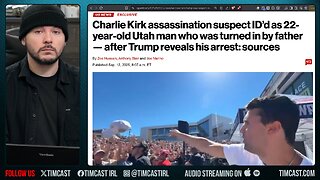 LIVE
LIVE
Timcast
12 minutes ago🚨PRESS CONFERENCE: Charlie Kirk Suspect In Custody | Tim Pool
8,130 watching -
 LIVE
LIVE
LFA TV
9 hours agoKILLER CAUGHT LIVE PRESSER! - FRIDAY 9/12/25
13,444 watching -
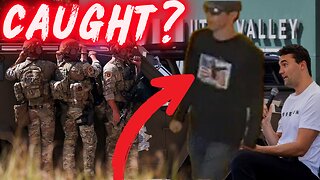 LIVE
LIVE
iCkEdMeL
46 minutes agoBREAKING: Trump Says Suspect in Charlie Kirk Assassination Likely in Custody
1,437 watching -
 LIVE
LIVE
Times Now World
7 hours agoLIVE NEWS | Charlie Kirk's Final Debate 24 Hours Before Tragic Murder By Sniper in Utah Event!
353 watching -
 LIVE
LIVE
The Bubba Army
23 hours agoVideo Killed The Radio Star, RELEASE DAY! - Bubba the Love Sponge® Show | 9/12/25
6,273 watching -

BEK TV
23 hours agoTrent Loos in the Morning - 9/11/2025
12.6K1 -
 22:25
22:25
DeVory Darkins
1 day ago $21.86 earnedTrump issues statement to the nation as FBI drops shocking update about shooter
99.1K142 -
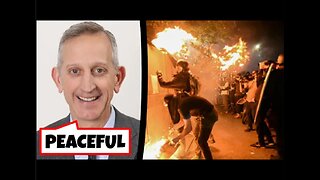 10:55
10:55
Nate The Lawyer
2 days ago $2.11 earnedPortland's WOKE Laws Stop ALL Arrests to Help Illegal Migrants Fight ICE.
38.1K28 -
 3:06:32
3:06:32
Price of Reason
16 hours agoCharlie Kirk Investigation Continues | Remembering 9-11 | Robert Downey Jr. Doctor Doom Look Reveal
281K69 -
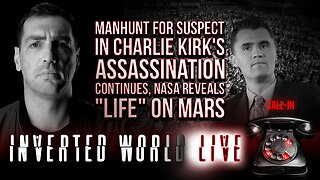 2:12:26
2:12:26
Inverted World Live
11 hours agoManhunt for Suspect in Charlie Kirk's Assassination Continues, NASA Reveals "Life" on Mars | Ep. 107
264K58